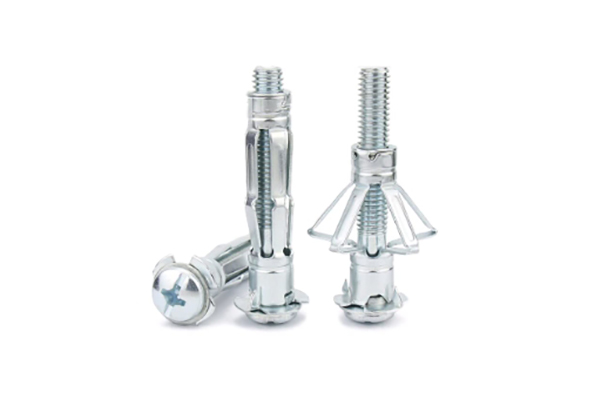When working on home improvement projects or mounting items onto walls, choosing the right hardware is essential to ensure stability and safety. Among the common fasteners used for securing objects in hollow walls is the M6 wall anchor. These anchors are designed to support medium to heavy loads, providing a reliable solution when attaching shelves, picture frames, and other items to drywall, plasterboard, or hollow block walls. One of the most important aspects of installing M6 hollow wall anchors correctly is determining the appropriate size hole to drill before inserting the anchor.
Understanding M6 Hollow Wall Anchors
Before discussing the exact hole size, it’s helpful to understand what M6 hollow wall anchors are. The “M” in M6 stands for metric, and the “6” indicates the diameter of the anchor, measured in millimeters. Specifically, an M6 anchor is designed for use with bolts or screws that are 6 millimeters in diameter. Hollow wall anchors differ from other types of wall fasteners because they expand behind the wall after installation, creating a secure hold in hollow spaces, such as between drywall and studs.
The Purpose of Drilling the Right Hole Size
Drilling the correct hole size is crucial for the anchor to fit securely in the wall. If the hole is too small, the anchor may not fit properly or could be damaged during insertion. On the other hand, if the hole is too large, the anchor might not expand adequately to hold the load, leading to reduced stability and potential failure. Ensuring the right hole size allows the anchor to expand behind the wall surface effectively, providing the necessary grip to secure heavy objects.
Hole Size for M6 Hollow Wall Anchors
For M6 hollow wall anchors, the recommended hole size typically ranges between 10mm and 12mm in diameter. This allows enough room for the anchor to fit snugly while still leaving space for expansion. Let’s break it down:
- For lightweight applications: A hole size of 10mm is usually sufficient. This provides a snug fit for the M6 anchor and is appropriate for mounting objects that don’t require extremely high load-bearing capacity, such as small shelves or picture frames.
- For heavier loads: A 12mm hole is often recommended. This slightly larger hole allows for better expansion of the anchor behind the wall, creating a more secure hold. This size is appropriate for heavy-duty applications, such as securing larger shelves, TV brackets, or other heavy fixtures.
Always check the specific manufacturer’s recommendations for the hollow wall anchors you are using, as the hole size can sometimes vary slightly based on the brand or material composition of the anchor.
Step-by-Step Installation for M6 Hollow Wall Anchors
- Mark the Drilling Point: Determine the exact location where you want to install the anchor. Use a pencil or marker to make a small dot at the center of the spot.
- Drill the Hole: Using a drill bit sized between 10mm and 12mm (depending on the specific anchor and application), drill the hole carefully into the wall. Be sure to drill straight and avoid applying excessive pressure, as this could damage the drywall.
- Insert the M6 Anchor: Once the hole is drilled, push the M6 hollow wall anchor into the hole. If the hole size is correct, the anchor should fit snugly. You might need to tap it lightly with a hammer to ensure it’s flush with the wall.
- Expand the Anchor: Depending on the type of M6 anchor, you may need to tighten the screw or bolt to expand the anchor behind the wall. This creates a secure hold within the hollow space.
- Secure the Object: After the anchor is properly installed and expanded, you can attach your object (such as a shelf or picture frame) by securing the screw or bolt into the anchor.
Benefits of Using M6 Hollow Wall Anchors
- High Load Capacity: M6 hollow wall anchors can support medium to heavy loads, making them ideal for mounting shelves, brackets, and large picture frames in hollow walls.
- Versatility: M6 anchors work well in various materials, including drywall, plasterboard, and even hollow concrete blocks, giving them wide utility across different projects.
- Durability: Once expanded behind the wall, M6 hollow wall anchors offer strong and stable support, reducing the risk of damage or failure, especially in hollow or fragile materials like drywall.
Conclusion
When using M6 hollow wall anchors, the correct hole size is essential for a secure installation. A hole between 10mm and 12mm in diameter is recommended, depending on the weight of the object being mounted and the specific anchor used. Ensuring the proper hole size allows for effective expansion behind the wall, providing a sturdy and reliable hold for medium to heavy items. For any project involving hollow walls, M6 anchors offer a versatile, strong solution for safe and durable installations.
Always consult product-specific instructions for precise guidelines, as different manufacturers may have slight variations in their recommendations.
Post time: Oct-23-2024
















